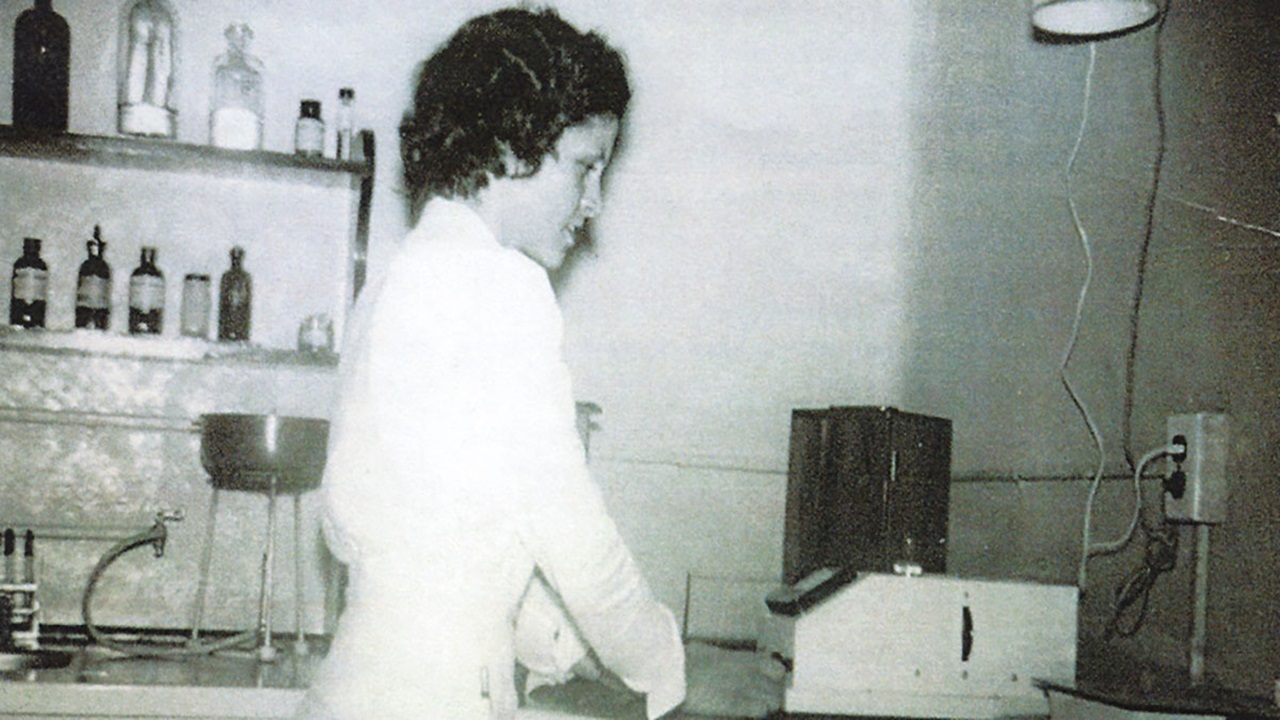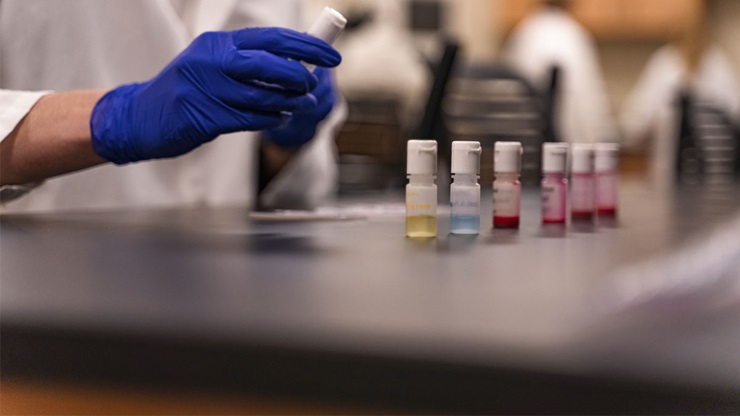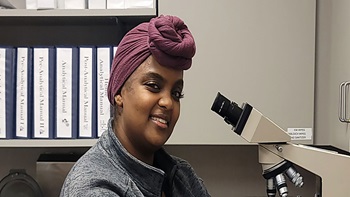A Substantial Resume

It would be an understatement to describe Marilyn Rose’s life as merely interesting. She earned four college degrees, as well as an academic-professional certification. She served polio victims, worked at a number of medical laboratories, determined pregnancies for her husband’s patients in a home laboratory, raised six children and had a long career as a college professor at a major university. Her husband’s life was equally rewarding and compelling, including an association with an historical event that connected his work as a medical examiner to a presidential assassination.
Rose, one of the very first to earn a certification from USD’s medical laboratory program, recently looked back at her experiences while studying medical laboratory science, and the 91-year-old reflected on how that education benefited her life.
She was born Marilyn Preheim on a farm east of Freeman, South Dakota, and she began her college career at Bethel College, in Newton, Kansas, where she earned a B.S. degree in chemistry. She was the first person in her family to earn a college degree. Returning to South Dakota, Rose decided to secure training and certification in USD’s newly-opened medical technology program. She entered the program in 1948, and spent most of her time at Yankton’s Sacred Heart Hospital, where the hospital’s laboratory director, Sister Mary Mauritia, provided day-to-day, hands-on instruction.
“At Sacred Heart I learned about many things, from the slicing of surgical specimens for examination by pathologists to blood sugar analysis using a bunsen burner to heat the blood,” recalled Rose.
She also remembered dealing with polio victims at Sacred Heart. “It was during that time,” she explained, “that hospital staff became very conscious about disease transmission, and we began wearing gloves and masks while working with patients.”
To augment the practical training Rose was receiving, two instructors from USD’s Vermillion campus drove to Yankton one day each week to lecture and tutor their student.
When she finished the program in 1949 as one of the program’s first graduates, she was invited to enter USD’s biochemistry graduate school. There, studying alongside USD medical students, she focused on enzymology – the study of enzymes – and she completed her master’s degree in 1950. Then it was off to Denver, Colorado, where she worked in hospitals at a cardiac catheterization lab and also with polio patients.
Marriage to fellow South Dakotan Earl Rose, a medical student at the University of South Dakota, took her to Omaha, Nebraska, so he could continue his training, and she worked at a laboratory at the University of Nebraska medical school until the birth of the couple’s first child. Her husband then joined a medical practice in Lemmon, South Dakota, and Rose and her family moved to that small, rural community near the North Dakota border.
Rose set up a makeshift laboratory in the basement of their Lemmon home to perform pregnancy tests, and her modest facility included an aquarium to house a collection of frogs, an integral part of the pregnancy-testing process. “A urine sample was taken from the woman who was wondering if she was pregnant,” explained Rose. “I would inject a frog with that urine sample. If the frog laid eggs the woman was pregnant. If the frog did not lay eggs the woman was not pregnant.”
"I am, forever grateful to the medical technology program at the University of South Dakota." - Marilyn Rose, one of the very first to earn a certificatoin from USD's medical laboratory program
After a couple years in Lemmon, the young family embarked on a series of moves around the country aimed at destinations where Dr. Rose’s medical and forensic training could be expanded. That eventually landed them in Dallas, Texas, where he was asked to transition the office and system of county coroner to that of medical examiner. In that position, in November 1963, he met with federal officials as they oversaw the body of President John Kennedy, who had just been shot and killed. Dr. Earl Rose insisted that he and his team perform an autopsy on the deceased president, but he was quickly overruled, and the president’s body was flown to Washington, D.C., where an autopsy was performed. Dr. Rose later performed autopsies on Lee Harvey Oswald, the man accused of killing President Kennedy, and Jack Ruby, who had murdered Oswald.
The Rose family ultimately moved to Iowa City, Iowa, where Dr. Rose taught at the University of Iowa schools of law and medicine. Marilyn returned to college, earning an M.A and Ph.D. degrees in anthropology from Iowa in 1982 that set the stage for a teaching career spanning two decades at that university’s anthropology and women’s studies departments. Earl Rose died in 2012.
Still residing in Iowa City, Marilyn Rose fondly recalled her studies as a pioneer student in the USD medical technology program (now called medical laboratory science) and how her experiences in the program influenced her life. “I learned how to pay attention to detail and how to reason, traits that carried over to other work and through the rest of my life,” she said. “I also learned basic medical knowledge and how to be compassionate, and those also contributed to my life.”
“I am,” she proclaimed, “forever grateful to the medical technology program at the University of South Dakota.”


